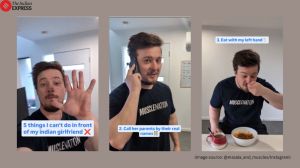‘Facebook for animals’ tested on birds
The communication between animals is similar to that of humans hence can be studied similarly.
A new way of analysing the social networks that link individual animals to each other has been tested on wild great tits by Oxford University researchers.
How animals associate in groups can have important consequences in terms of the health and survival of both individuals and whole populations,and can influence factors such as the spread of disease and the ability to find food or mates,a university release said.
It added that revealing the networks underlying animal societies is a challenge when a large amount of fieldwork data consists of a long stream of automated observations of the times and locations of individuals,leaving scientists to try and reconstruct the ‘big picture’ of how individuals are connected.
The new approach can automatically identify periods of intense social activity within a large number of observations in this example around one million observations of wild great tits (Parus major). This makes it possible to examine these periods in greater detail and calculate which individuals are real ‘friends’,rather than random passers-by,and even which are looking to pair up and mate,the release said.
A report of the research is published in this week’s Journal of the Royal Society Interface. If you think of the data about you in Facebook it records things like who you are friends with,where you’ve been,and what you share with others,said Ioannis Psorakis of Oxford University’s Department of Engineering Science,who led the research. What we have shown is that we can analyse data about individual animals,in this case great tits,to construct a ‘Facebook for animals’ revealing who affiliates with who,who are members of the same group,and which birds are regularly going to the same gatherings or events.
The researchers team tested the new technique on data from two breeding seasons of wild great tits (August 2007 to March 2008 and August 2008 to March 2009).
The data came from transponders attached to thousands of birds and sensors that logged when individuals appeared at any one of 67 bird feeders spread throughout Wytham Woods,near Oxford.
The researchers found that their predictions from this data about which birds were ‘friends’ that regularly foraged for food together,as well as which birds were starting the process of pairing up or were already in a pair,matched visual observations made by zoologists.



- 01
- 02
- 03
- 04
- 05




























